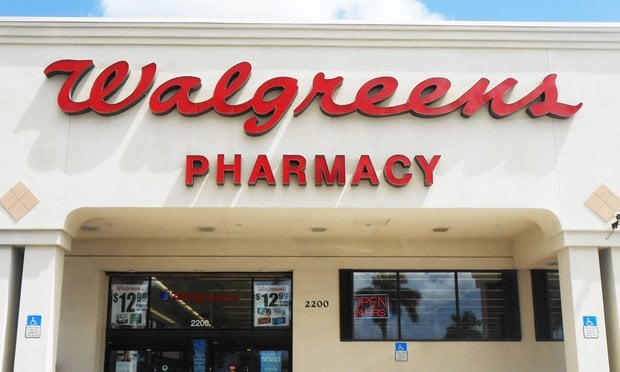Concern about patients spending too much of their own money on health care has driven the debate over repealing and replacing Obamacare. But the latest Senate Republican health bill does little to address those fears and may exacerbate them.
The bill, rolled out anew on Thursday after a raft of Republican defections threatened to sink the original legislation, faces a narrow road to passage despite alterations aimed at winning over lawmakers who balked at the earlier draft. Two Republican Senators signaled their opposition; a third dissent could doom the measure, and a long-held GOP vow to overturn the Affordable Care Act.
Among other changes, including some specifically targeted at wavering GOP moderates, the bill now provides more money to states to help cover some patient costs, and sets up a $45 billion fund for treating opioid addiction.
Doctors and hospitals quickly lined up against the plan, saying it still will leave the most vulnerable Americans without viable options for health insurance. The American Hospital Association told lawmakers to “go back to the drawing board.”
“The revised bill does not address the key concerns of physicians and patients regarding proposed Medicaid cuts and inadequate subsidies that will result in millions of Americans losing health insurance coverage,” David Barbe, the president of the American Medical Association, said in a statement.
Pocketbook issue
High upfront costs for care have been a frequent line of attack for critics of Obamacare. Earlier versions of the Senate bill relied on high deductibles to keep premiums down, and the new bill does little to change that, creating a market that largely pushes individuals into plans where their out-of-pocket costs could total thousands of dollars.
The Congressional Budget Office is expected to release its evaluation of the rewritten legislation as soon as Monday.
“I just don’t see the Republican Senate plan as creating a more workable market,” said Robert Laszewski, an insurance-industry consultant and Obamacare skeptic. “And it makes things a lot worse for many people.”
Voters have signaled that their upfront spending on health care is a top concern. A Kaiser Family Foundation poll in January found that reducing the costs individuals have to pay for health care was cited as the top priority of about two-thirds of Democrats, Republicans, and independents. President Donald Trump promised “great health care for much less money" and in April touted “much lower premiums & deductibles” in the Obamacare overhaul in a post on Twitter.
The initial Senate health bill was criticized for lowering premiums by raising deductibles. To address those concerns, the new bill adds $70 billion to a stabilization fund in order to help states control out-of-pocket expenses. But cuts elsewhere could still drive up upfront costs.
Medicaid worry
For lower-income Americans, the bill carves into Medicaid, shifting poor people out of the program and into private coverage where they could face deductibles reaching thousands of dollars. One change to the bill pushed by Republican Senator Ted Cruz of Texas would let insurers create even skimpier plans that could exclude coverage for an array of conditions.
Maine’s GOP Senator Susan Collins has said that she’s opposed to the measure because of its Medicaid cuts. Governors attending their summer meeting in Providence, Rhode Island, said they are studying the bill but are concerned about states having to assume more of the cost for Medicaid and their residents losing coverage.
The Senate bill “still has meaningful cuts to the Medicaid program, with no explanation as to how you can accomplish those cuts, except by reducing enrollment or services provided,” said Craig Garthwaite, a professor at Northwestern University’s Kellogg School of Management.
“A lot of the difference in the bill is funneling more money to the states,” Garthwaite said. “If a state chooses to use that money for something else, it’s going to be tough to be a moderately low-income person covered by this plan.”
Subsidy shift
Poor patients benefit from Obamacare subsidies that lower their upfront costs, but the Senate plan cuts off such cost-sharing reduction payments in 2020. That could boost the average deductible for someone making just more than the poverty level from a few hundred dollars to more than $6,000, according to the Kaiser Family Foundation.
The Senate measure also reduces help available for individuals to buy health plans. Subsidies -- which are only available up to 350 percent of the poverty level, rather than Obamacare’s 400 percent limit -- would be based on plans that cover 58 percent of medical costs, compared with about 70 percent in Obamacare.
According to the Brookings Institution, the reduced subsidies and other changes mean individuals will pay 5 percent to 9 percent more for their health insurance plans, compared to under Obamacare. That analysis is based on a previous version of the bill. Changes to the new version in an amendment backed by Cruz could make the situation worse, according to Matt Fiedler, one of the authors of the analysis.
“The Cruz amendment will significantly increase premiums in the ACA-compliant market, and the additional stability funding is probably not enough to offset that increase,” he said. “That will cause significant increases in premiums for sicker people not eligible for tax credits.”
Healthier people could get cheaper coverage, but it might not cover care they need if they do get sick.
“By enrolling people in skimpier plans, the GOP can say they are giving people lower premiums,” said John Graves, a professor at Vanderbilt University School of Medicine. “There is little attention paid, if any at all, to the affordability of out-of-pocket health expenses.”
© 2025 ALM Global, LLC, All Rights Reserved. Request academic re-use from www.copyright.com. All other uses, submit a request to [email protected]. For more information visit Asset & Logo Licensing.







